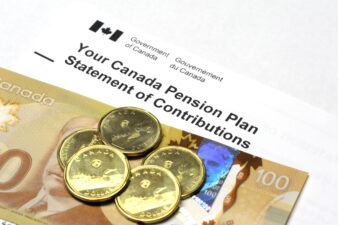The 2021 tax season is here. If you are an employee or self-employed, file your taxes before May 2, as April 30 is a Saturday. Even if you have no tax liability or no income, you should file taxes. The Canada Revenue Agency (CRA) gives you benefits like Canada Child Benefit (CCB) and Old Age Security (OAS). Now, when doing taxes, there are many ways you can reduce your tax bill for 2021.
The first thing is to collect the T1 slip and all other income slips, including the T4A slip for the CRA’s COVID-19 benefits. Once your taxable income is in place, how much tax you pay depends on how well you leverage tax benefits.
Work-from-home tax deduction
If you have been working from home, you pay for utility, broadband, stationery, and even your home space. You can deduct these expenses from the proportion of your house you have converted into an office. However, there are exceptions, like mortgage interest payments, that are not counted as deductions.
All this is tedious and needs bills and receipts of every expense you claim. For the 2021 tax year, you can benefit from the temporary flat-rate method of $2/day for every day you worked from home up to $500. No receipts or calculation are required. So, if your taxable income is $55,500, you can reduce it to up to $55,000.
The CRA’s special tax credits
Apart from COVID benefits, the CRA offers digital news subscription tax credit of up to $75 if you purchased $500 worth of qualifying subscriptions. If you haven’t purchased any subscriptions, you might not be able to use this benefit. There is another benefit called Canada Training Credit. You can save up to $500 in taxes if you paid tuition fees for post-secondary courses or occupational skill courses.
Save on the CRA’s penalty: File taxes before May 2
You can save on tax bills through timely returns filing, because the CRA will charge you a late-filing penalty. As I said before, the deadline is May 2. Even a day’s delay could bring in a 5% penalty on any balance you owe the CRA. And the more you delay, the more the penalty: 1% every month for 12 months. If the CRA formally demands a return, your late-filing penalty for 2021 will be 10% of the balance owing. In addition, there would be a penalty of 2% every month for 20 months.
For instance, if your tax liability is $5,000, a delay in tax filing could lead to a $250 immediate fine and up to $850 ($250 + 1% per month) after 12 months. If the CRA formally asks you to file returns, there could be an immediate penalty of $1,000 plus up to $4,000 ($1,000 + 2% per month) in the next two years. That is a liability you won’t like.
Save tax in the present: Invest in an RRSP
One interesting tax deduction you can get is by using the Registered Retirement Savings Plan (RRSP). If your tax liability is still high, you can invest up to 18% of your income up to a maximum amount in RRSP. You can deduct the RRSP contribution from your taxable income. For 2021, the maximum RRSP contribution was $27,830. If you didn’t invest in RRSP before March 1, you can use this benefit next year. For 2022, the contribution limit is $29,210.
When considering RRSP investment, think long term. Enbridge (TSX:ENB)(NYSE:ENB) is a stock worthy of your RRSP. It has been trading on TSX since your parents were earning. It will continue to exist and pay dividends when your children start earning. The company is in the evergreen business of pipelines. Its pipeline infrastructure initially transmitted oil, then it gradually broadened to transmit natural gas. It is investing in renewable energy and is open to using its pipeline infrastructure to transmit greener energy. As long as its pipelines transmit energy, it will strive to pay dividends.







